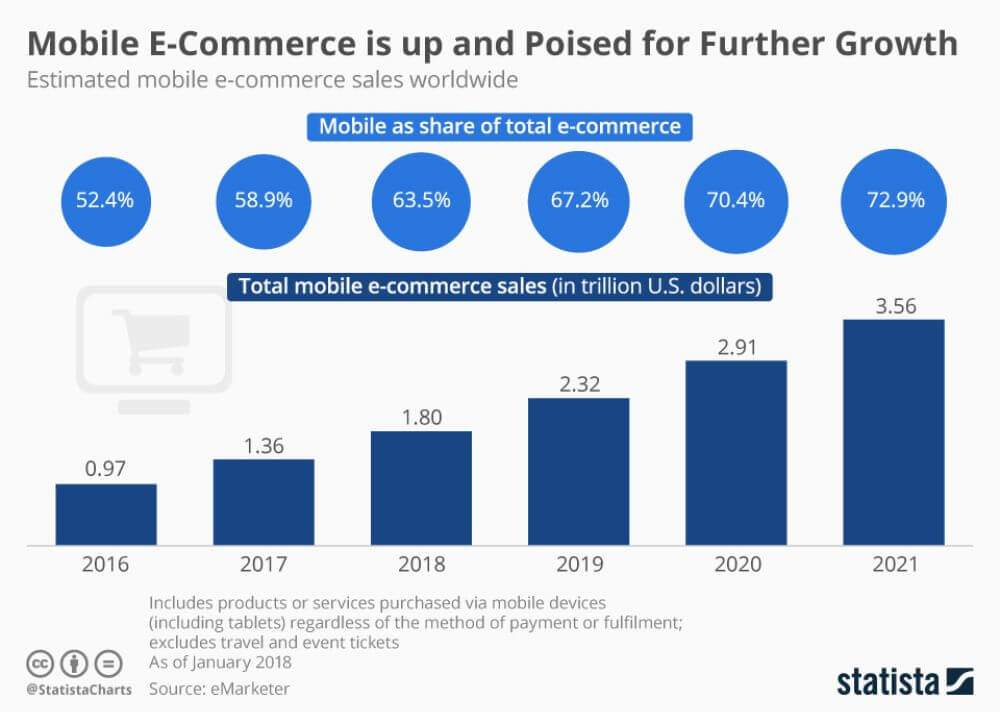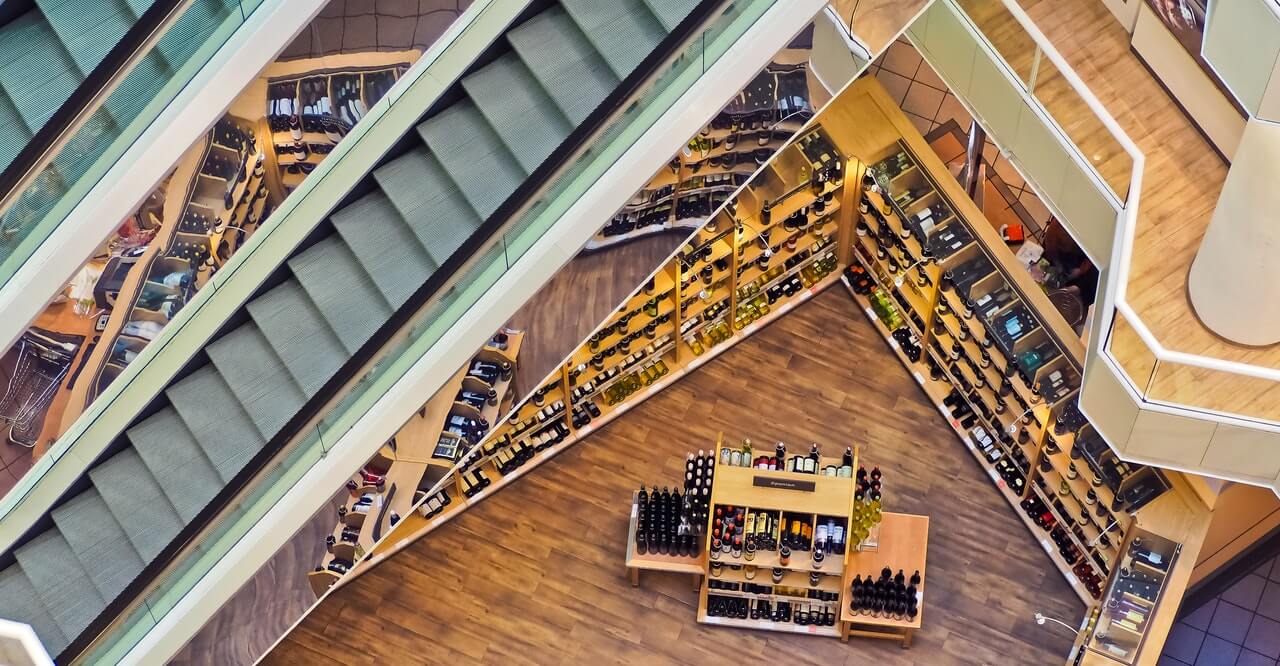The COVID-19 pandemic hit the retail industry especially hard in 2021, saddling the industry with some unprecedented business challenges.
Global shipping crises, supply chain bottlenecks, increased customer demands, and worldwide lockdowns dampened retail sales and revenue.
But there was one bright spot for retail businesses like yours; emerging technologies adopted as a response to COVID-19 boosted online sales dramatically.
In fact, research predicts a steady 8% increase in retail e-Commerce sales through 2024.
This is a critical opportunity for brands, but only if they can deliver great online customer experiences. That’s a challenge for retailers of all sizes, even for e-commerce stores.
However, 2022 will see new technological trends emerge that can help retailers transform their businesses, and achieve their potential in buyer-to-customer (B2C) e-Commerce.
Here are five technology-driven trends that will define the B2C e-Commerce in 2022:
1. Personalisation of Marketing and Products

Today’s customers expect hyper-personalised buying experiences that caters their preferences. Meeting these expectations involves creating seamless, omnichannel buying experiences based on their individual needs and demands.
Therefore, personalisation will be a potent weapon for driving customers to e-Commerce stores, and make valuable purchases.
Creating a personalised experience for customers should be a key goal for every retailer in 2022. Doing that, however, can be a challenge for big and small brands alike.
However, thanks to technologies such as machine learning (ML), cookies and device IDs, retailers can acquire the customer data needed to provide a highly personalised buyiong experience.
2. Increased Use Of Voice Search

Voice search has been been around for a while, but promises to take off in 2022 with voice e-Commerce sales expected to reach $19.4 billion by 2023.
However, to take advantage of voice search, retail businesses like yours must optimise their e-Commerce stores for the technology. Fortunately, businesses have plenty of tools with which to do that.
For example, chat apps such as FaceBook Messenger and voice assistants like Alexa and Siri are potent sales weapons.
These tools allow customers to engage with a business, get suggestions, and make purchases in real-time.
For customers, voice search simplifies the process and saves time since it’s faster than typing in the information, making it a convenient way to buy.
3. Greater Focus on Social Commerce
%20(1).png?width=1000&name=Accenture_Social%20Commerce%20(1)%20(1).png) Definition & examples of social commerce; Source: Accenture
Definition & examples of social commerce; Source: Accenture
With more and more customers turning to social media to buy new products and test new brands, retailers are increasingly turning to social commerce to reach them.
This is paying off for retailers who have done so with growing sales opportunities, with social commerce sales reaching $492 billion in 2021.
In fact, an Accenture study predicts that sales through social commerce will hit US$1.2 trillion in sales by 2025.
Because of this, social media platforms such as FaceBook and Instagram are embracing social commerce, and ramping up the introduction of features to support such.
Savvy retailers are also using tools like user-generated content to engage followers, partnering with influencers to drive sales, and employing live stream to showcase products.
For customers, these tools are convenient ways to buy, as they enable purchases without ever leaving the app.
4. Higher Adoption Of Augmented/Virtual reality (AR/VR)
.jpg?width=1000&name=Higher%20Adoption%20Of%20AugmentedVirtual%20reality%20(ARVR).jpg)
Physical browsing is a critical advantage brick-and-mortar stores hold over e-Commerce stores. That’s because customers can’t physically try on clothing online before buying.
Augmented reality (AR) and virtual reality (VR), however, levels the playing field for e-Commerce retailers.
With AR or VR, your customers can browse and view products from multiple angles before finalizing buying, boosting confidence in their purchases.
In fact, statistics for 2021 show that the adoption of AR/VR in E-commerce can boost online shopping conversion by 17%.
Because of this, some retailers are embracing this technology to fill in the gaps caused by COVID-19.
To boost online sales, your retail business should therefore add AR/VR capability to their e-Commerce platforms to help boost online sales.
5. Shift To Mobile Shopping
 Overview of mobile commerce sales (2016 - 2021); Source: Statista
Overview of mobile commerce sales (2016 - 2021); Source: Statista
Mobile sales are at an all-time high. They’re predicted to reach $3.65 trillion in 2021, up 22% from 2022.
This should come as no surprise, as customers are prioritising convenience when shopping more now than ever before.
Mobile shopping simplifies the buying process and makes it easy for consumers to place orders on the go. Put simply, a mobile-optimised e-Commerce store can serve as the foundation for an exceptional customer experience.
Mobile shopping provides numerous benefits for businesses. It accelerates the buyers’ journey, reaches customers at the right time, allows for personalised content, and generates valuable customer data.
Mobile shopping also boosts local and on-page SEO, reduces shopping cart abandonment, and boosts direct communication with customers.
New Technologies Will Define B2C E-Commerce In 2022

The five technological trends mentioned above will define the B2C e-Commerce retail space in 2022 and beyond.
Leveraging these technological trends can transform your retail business. However, you must identify which of these trends will work best when it comes to building an engaging online experience for your customers.
Only then will investing in them help you build an omnichannel experience that can adapt to the fast-changing needs and demands of today’s customers.
However, other trends will also make their mark on the retail industry. These include AI-assisted upselling and cross-selling, additional payment options, and enhanced distribution and fulfillment planning.
And while these technologies will help your e-Commerce store drive sales and revenue, you’ll also need to ensure your supply chain is resilient enough weather future disruptions.
Only then will you be able to guarantee sufficient stock to meet customer demand on your e-Commerce store.
To learn how you can build a resilient supply chain, click on the image below for our 4-step guide.




